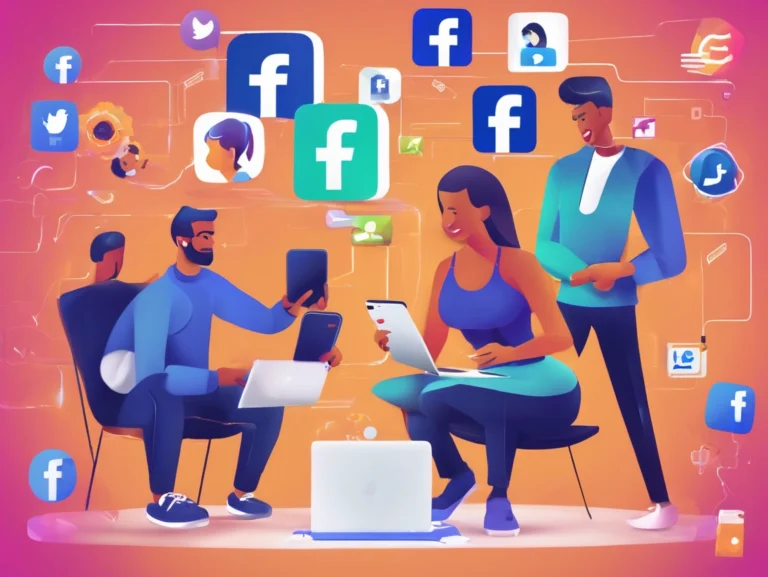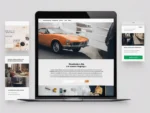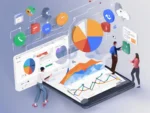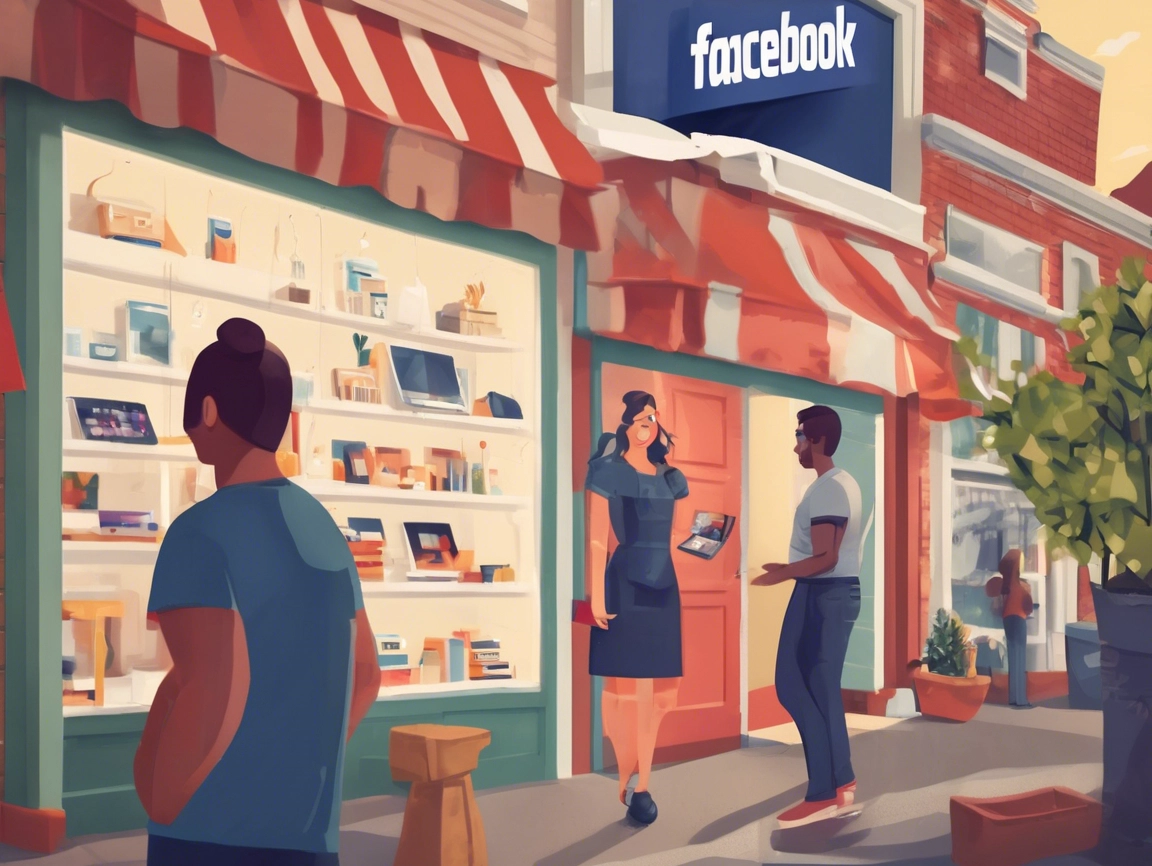
Facebook for Small Business: 17 Proven Tips to Boost Engagement, Reach, and Sales
Do you own a small business and want to turn Facebook into a powerful growth channel? You’re in the right place.
With nearly 3 billion monthly active users, Facebook remains one of the most effective (and underrated) platforms for small business marketing. It’s where customers go to discover local brands, engage with content, ask questions, and even make purchases, often without ever leaving the app.
As a Fractional CMO who’s helped dozens of small businesses build smart, sustainable digital strategies, I’ve seen firsthand how Facebook can drive real business results, even on a modest budget. But success doesn’t come from posting randomly or chasing vanity metrics. It comes from having a clear, strategic approach tailored to your audience, your offer, and your time.
That’s exactly what you’ll get in this post.
Whether you’re just launching your Facebook Business Page or you’re looking to improve what you’ve already built, these 17 actionable tips will help you stand out, build stronger relationships with your audience, and ultimately grow your business using Facebook without wasting your time or money.
The Basics: Set Up Your Page for Success
Before you dive into content or ads, you need to get the foundation right.
Your Facebook Business Page is often the first impression someone has of your brand, so it needs to do more than just exist. From optimizing your profile and imagery to setting up the right calls to action, this is where strategy meets structure. Whether you’re a local bakery, a consulting firm, or an ecommerce brand, setting your page up with intention will help Facebook’s algorithm work in your favor and help potential customers stick around long enough to convert. These first few steps may seem basic, but they’re where real results begin. Let’s get them right.
1. Take a Strategic Look at Your Competitors
When it comes to Facebook marketing for small business, your competitors can be one of your best learning tools. You just need to know what to look for.
Start by identifying businesses in your niche or location that are active on Facebook. Look at how they position themselves: Are they leaning into personality and culture? Highlighting their products? Focusing on customer success stories or reviews? You’ll likely start to see patterns in the types of content that perform well as well as where there’s white space you can fill.
This isn’t about copying. It’s about benchmarking and gaining inspiration with intention. As a Fractional CMO, one of the first things I recommend to clients is a lightweight competitive audit to understand the tone, frequency, and strategy behind the top-performing content in your industry, whether it be on Facebook, another social media platform, or search engine results.
If you’re in a less competitive local market, or you’re introducing something new, look beyond your immediate geography. Study larger players or out-of-area competitors with similar target audiences. Pay attention to:
- What kinds of posts generate the most engagement (likes, shares, comments)
- How they’re using Facebook tools like Shops, Stories, or Messenger
- Their tone and voice: Are they fun and casual, or more professional and polished?
- How often they post and whether they’re running paid ads
Then ask yourself:
“What can I do differently, or better, to serve my audience?”
This process gives you both inspiration and a strategic edge. Plus, it ensures that the content you create isn’t just noise in the feed, but something that positions your business as a true standout in your space.
2. Fully Set Up and Optimize Your Facebook Business Page
Make sure you choose the right name and category and completely flesh out all available content options. You don’t want your small business profile to look like you just threw it together. In addition, the information on your business page is something that the Facebook algorithm can use for customer targeting, content suggestions, and other features that’ll help your business page or advertisements get more views. And for advertising, full and accurate information helps ensure your ads are seen by the RIGHT people. Plus, you’ll likely get more likes in the process.
Fractional CMO Insight: Think of your Facebook Page as your digital storefront. Before running ads or launching campaigns, make sure everything is accurate, on-brand, and complete. An incomplete page can turn away potential customers before they even read your content. Bonus: a fully built-out page also helps with discoverability in both Facebook and Google search.
Further Reading: How to Create a Facebook Business Page in 12 Easy Steps
3. Use a Strong Cover Photo
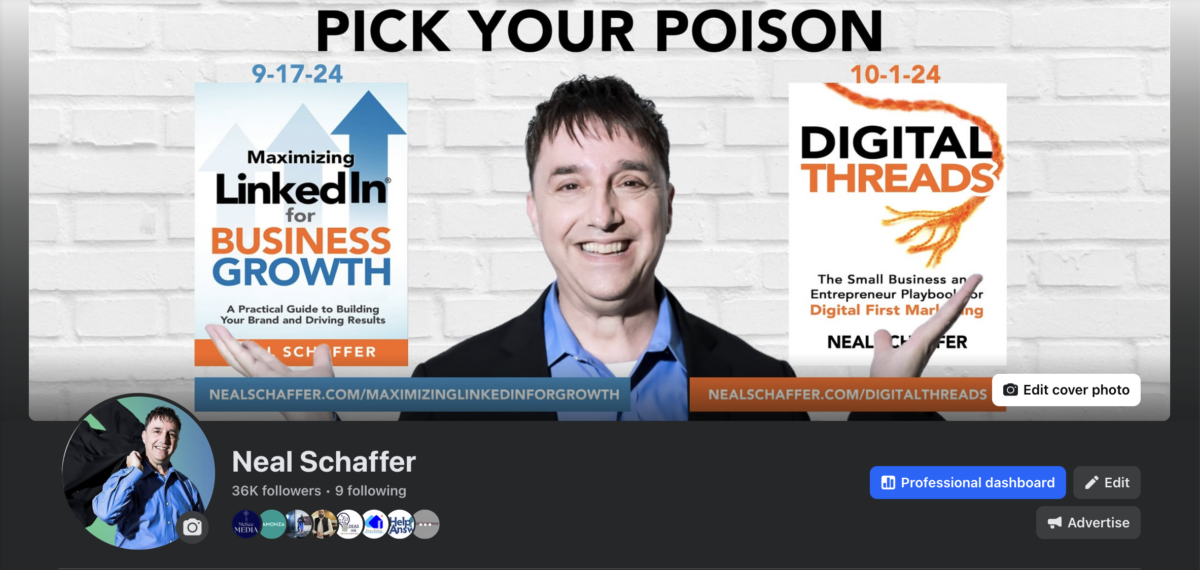
You’ll want to make a great first impression with a strong cover photo. While you’ll typically use a logo for the profile photo, the cover photo on your Facebook Business page is a place to show some personality. For many professional services firms, a photograph of staff is a common choice. On the other hand, a restaurant would likely showcase a particularly nice part of their dining area or bar. No matter what you choose, make sure it reflects your business, what it stands for, and why viewers should do business with you. That’s one way to maximize Facebook for small businesses and its free features.
Pro Tip from a Fractional CMO: Your cover photo is prime real estate and should tell a story in 3 seconds. Use it to highlight what makes your business unique: a signature product, a happy team, or even a customer testimonial graphic. Update it seasonally or during major campaigns to keep your page feeling fresh and relevant.
4. Customize Your CTA Button and Build Out Your Facebook Shop
Your Facebook Page isn’t just a digital business card. It can (and should) function as a conversion tool. That starts with optimizing your call-to-action (CTA) button and, if you sell products, linking your ecommerce catalog.
Let’s start with the CTA button. Facebook gives you several options to choose from: “Call Now,” “Send Message,” “Book Appointment,” “Shop Now,” and more. But the default choice isn’t always the best fit for your business. Instead, think strategically: What’s the one action you want your visitor to take the moment they land on your Page?
Is Your LinkedIn Working?
Just released: my new book to help professionals, entrepreneurs, and business owners maximize LinkedIn for real growth.
With years of LinkedIn expertise, Maximizing LinkedIn for Business Growth offers actionable steps to build your brand, expand your network, and drive results.
Start leveraging LinkedIn like never before—grab your copy now! Click the cover or button below to buy on Amazon.
- Are you a service provider? Use “Book Now” and connect it to your calendar or booking app.
- Selling physical products? Choose “Shop Now” and link it directly to your online store or your Facebook Shop.
- Want to drive DMs and increase conversions through conversation? “Send Message” with Messenger automation is a smart move.
As a Fractional CMO, I can’t stress enough how important it is to align this CTA with your business goals. The CTA is your conversion lever, so don’t leave it set to default.
Don’t Overlook Facebook Shops
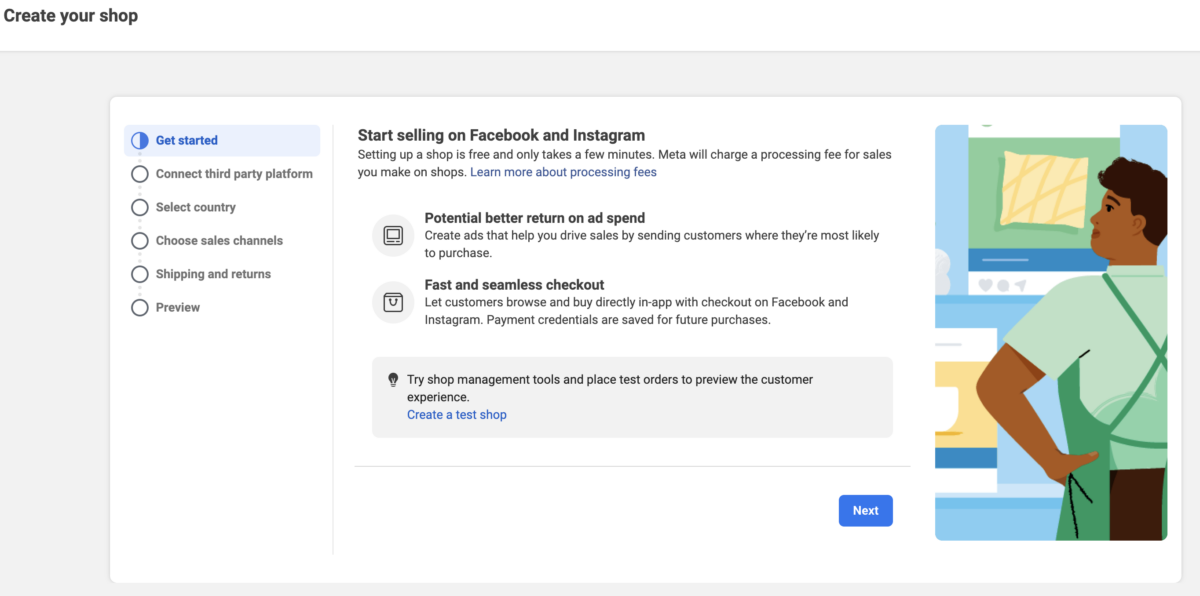
If you have an ecommerce store, Facebook Shops is a powerful (and free!) feature.
By syncing your product catalog to Facebook, you make it easy for fans to browse and buy without ever leaving the app. Plus, this also unlocks shoppable Instagram posts and taggable product features in Stories and Reels if your Instagram is connected.
You don’t need to be a full-fledged ecommerce brand to benefit. I’ve seen coaches sell digital products, restaurants promote merch, and local businesses generate revenue from niche offerings all using Facebook Shops.
This is one of those set-it-once, benefit-forever elements. It’s also increasingly tied into Facebook Ads and algorithmic visibility, so having a Shop in place gives you access to advanced features like retargeting based on product views or abandoned carts.
Pro Tip: If you’ve already connected your Facebook Page to Instagram, syncing your catalog means you only have to do the heavy lifting once. Both platforms benefit.
In short: Don’t let your Facebook Page be a passive business profile. Use it as a functional part of your sales funnel.
Further Reading: 15 Ways How to Get More Likes on Your Facebook Business Page
5. Top Free (and Paid) Tools for Facebook Marketing
At this juncture, you have hopefully set up your Facebook Page for success. Now it’s time to make sure we understand what tools we will need from here on out to be successful on Facebook.
When you’re running a small business, your time and resources are limited, and that’s why having the right tools in your corner makes a big difference. Whether you’re posting content, running ads, or simply trying to stay consistent, these tools can help you work smarter, not harder.
1. Meta Business Suite
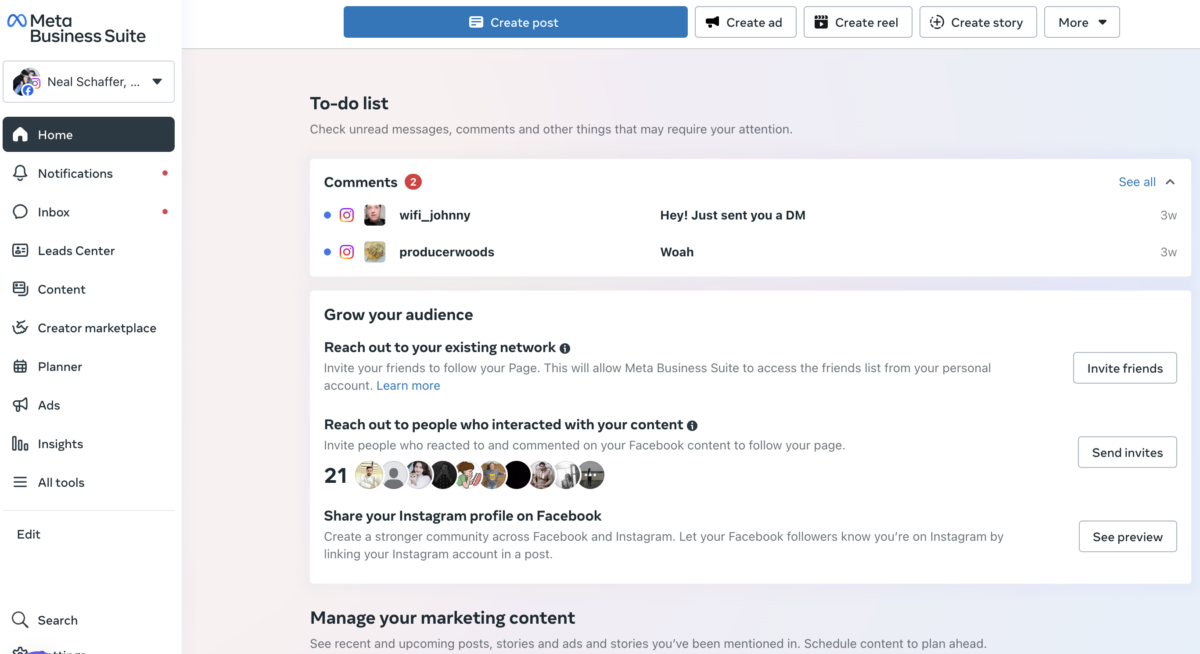
This is Facebook’s native, all-in-one dashboard to manage posts, messages, and insights across both Facebook and Instagram. It’s free, intuitive, and perfect for scheduling content and checking performance without needing a separate platform.
2. Adobe Express (Free + Premium)
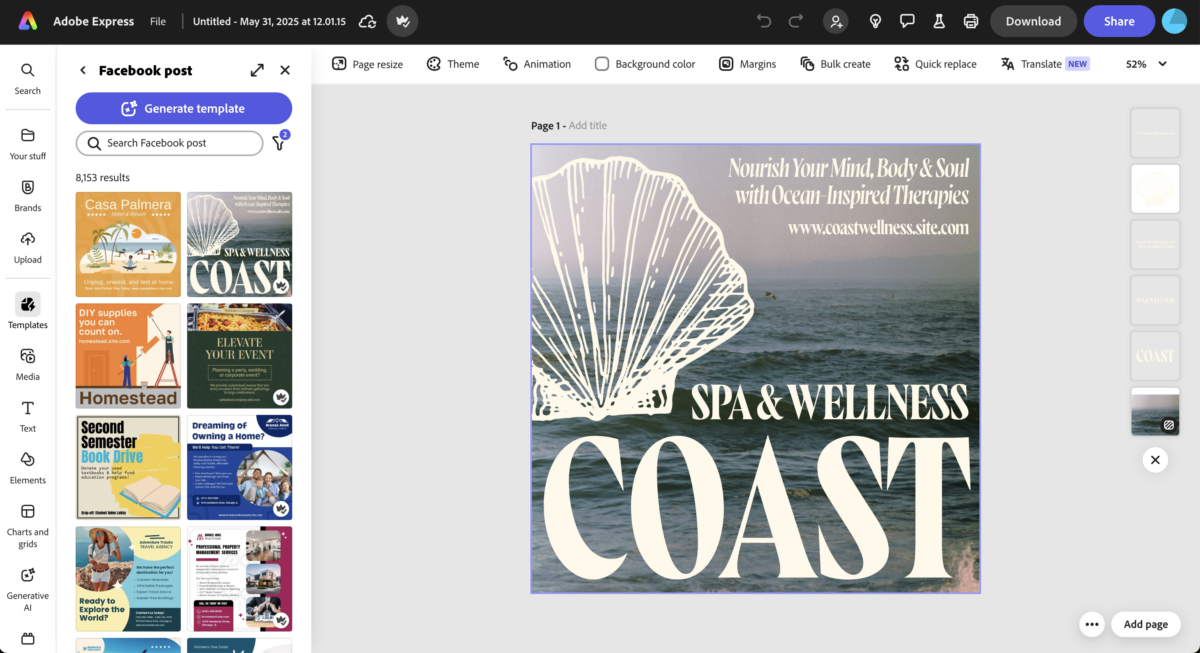
Adobe Express is an excellent tool for creating high-quality visuals quickly, especially if you don’t have a design background like me! With templates sized specifically for Facebook, you can create eye-catching posts, stories, and ad creatives in minutes. It’s a great way to stay on-brand and professional without hiring a designer.
3. Social Media Dashboards
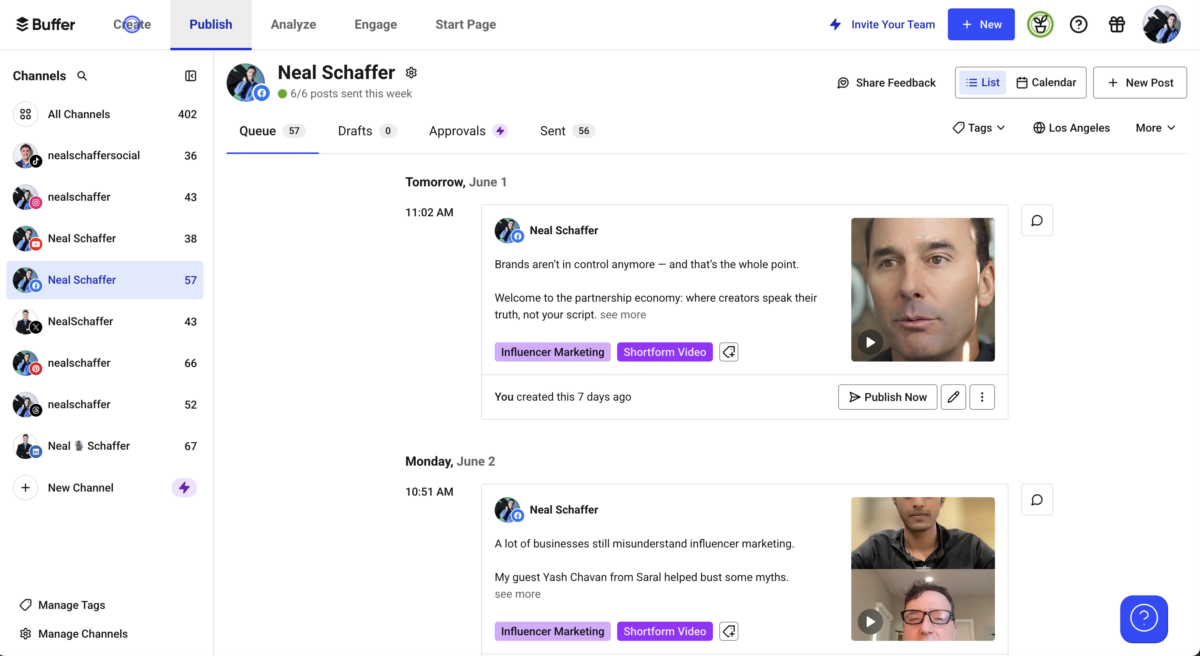
If you’re posting across multiple platforms, or just want one place to manage everything, a social media dashboard is a smart investment. Tools like Buffer (which I currently use), Hootsuite, Later, and SocialBee allow you to schedule posts in advance, monitor engagement, and even review performance analytics all in one place. While Meta Business Suite is great for Facebook and Instagram, these platforms offer broader channel management and team collaboration features.
4. Facebook Ads Library
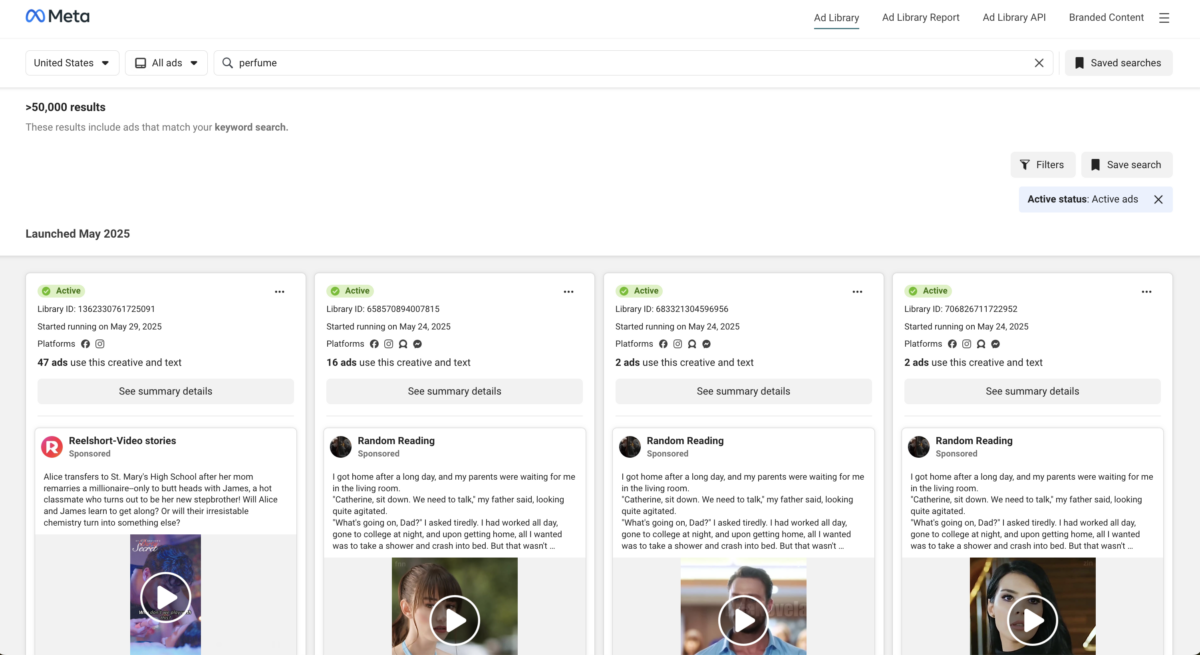
This free tool is one of the most underutilized gems. The Facebook Ads Library lets you search and view all currently running ads from any Facebook Page. It’s a goldmine for competitive research and creative inspiration before launching your own campaigns.
Fractional CMO Tip: Don’t overwhelm yourself with too many tools out of the gate. Start with Meta Business Suite and Adobe Express. Once you’ve got a rhythm, explore social media dashboards or the Ads Library to scale your strategy more efficiently.
Facebook Content Strategy
Now that your page is set up, you need to think about what content you are going to publish to engage your growing number of fans.
After all, part of the reason for running a Facebook Business page is to have a community around your brand. These communities aren’t as large using Facebook for small businesses as they would be for MNCs, but they are still important.
6. Know Your Facebook Content Types (and How to Use Them Strategically)
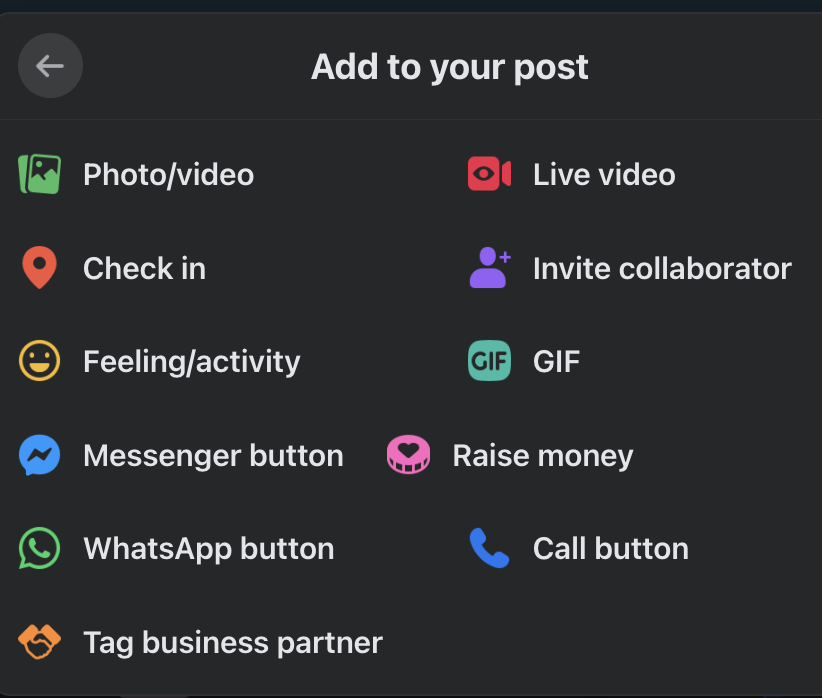
Now that your Facebook Page is optimized, it’s time to bring it to life with content. But not just any content. Each and every post should serve a purpose. Understanding the different types of content Facebook supports and how they perform is key to building a smart content strategy that actually drives engagement and conversions.
Here’s a breakdown of content formats every small business should experiment with:
🔹 Photo Posts
Photos remain one of the most engaging formats on Facebook. High-quality visuals of your product, your team, your location, or even behind-the-scenes shots of your process can help humanize your brand. These are great for storytelling and evoking emotional connection.
🔹 Video Posts
Video is arguably the most powerful tool in your Facebook content arsenal. Native videos autoplay in the feed, which makes them incredibly effective at capturing attention. Whether it’s a product demo, customer testimonial, or a behind-the-scenes look, short-form video boosts reach and keeps people on your Page longer.
Tip: Use captions because most people watch with the sound off.
🔹 Live Video
Going live on Facebook is a fantastic way to create real-time interaction and build community. Host a Q&A, give a tour of your shop, or announce a new product. Live videos typically generate higher engagement rates and are favored in the algorithm.
🔹 Link Posts
Want to drive traffic to your blog or website? Link posts are the way to go. They automatically generate a preview with a headline, image, and description. To get better click-through rates, write compelling copy above the link that teases what’s inside.
🔹 Text-Only Posts
Sometimes simplicity wins. A short, thoughtful question or tip without any attached media can generate surprising engagement. Use these sparingly and intentionally. They’re great for sparking conversation.
🔹 Stories
Stories are vertical, mobile-first content that disappear after 24 hours. They’re ideal for limited-time offers, quick updates, or more casual, behind-the-scenes content. You can post Facebook Stories directly or sync them from Instagram.
🔹 Polls and Interactive Posts
Don’t forget to ask your audience questions. Polls, quizzes, and “this or that” posts not only boost engagement:They give you valuable customer insights.
🔹 Hashtag Use (with Intention)
Facebook’s algorithm doesn’t prioritize hashtags like Instagram’s, but a few branded or niche-relevant hashtags can still help with discoverability. Consider creating a custom hashtag for your business that your community can use when tagging you.
Want to stay consistent? That’s what Section 6 is for: your content calendar.
On Facebook, many but not all content types can include a branded hashtag. If possible, you should have one so that your followers and fans can share stories about your company in such a way that new people will check out your page. There’s a list of these content types on Facebook’s website.
Further Reading: Real Estate Facebook Marketing: The Definitive Guide with Advice on Everything from Content to Ads
7. Plan Ahead and Post with Purpose
One of the biggest challenges small businesses face on Facebook is showing up consistently. But consistency without strategy can just be noise. That’s where a content calendar comes in. It helps you stay organized and ensures every post has a purpose.
A content calendar doesn’t need to be complex or time-consuming. It’s simply a behind-the-scenes plan of what you’re going to post, when you’re going to post it, and why. This can be as simple as a spreadsheet, or as robust as using a scheduling tool like Buffer or Agorapulse. The goal is to take the guesswork out of content so that every post aligns with your brand’s message and business goals.
At the same time, it’s important to post intentionally. Not every post should be promotional. Think about how each piece of content provides value: Are you educating your audience? Entertaining them? Building trust? Encouraging interaction?
Pro Tip from a Fractional CMO: Aim for consistency over frequency. If five days a week feels overwhelming, start with three high-quality posts and build from there. It’s better to show up regularly with thoughtful content than to post daily just to check a box.
When you combine planning with intention, your Facebook content becomes more than just filler. It becomes part of your brand’s story, creating a rhythm that your audience can rely on and engage with.
8. Repurpose Facebook Content Across Channels
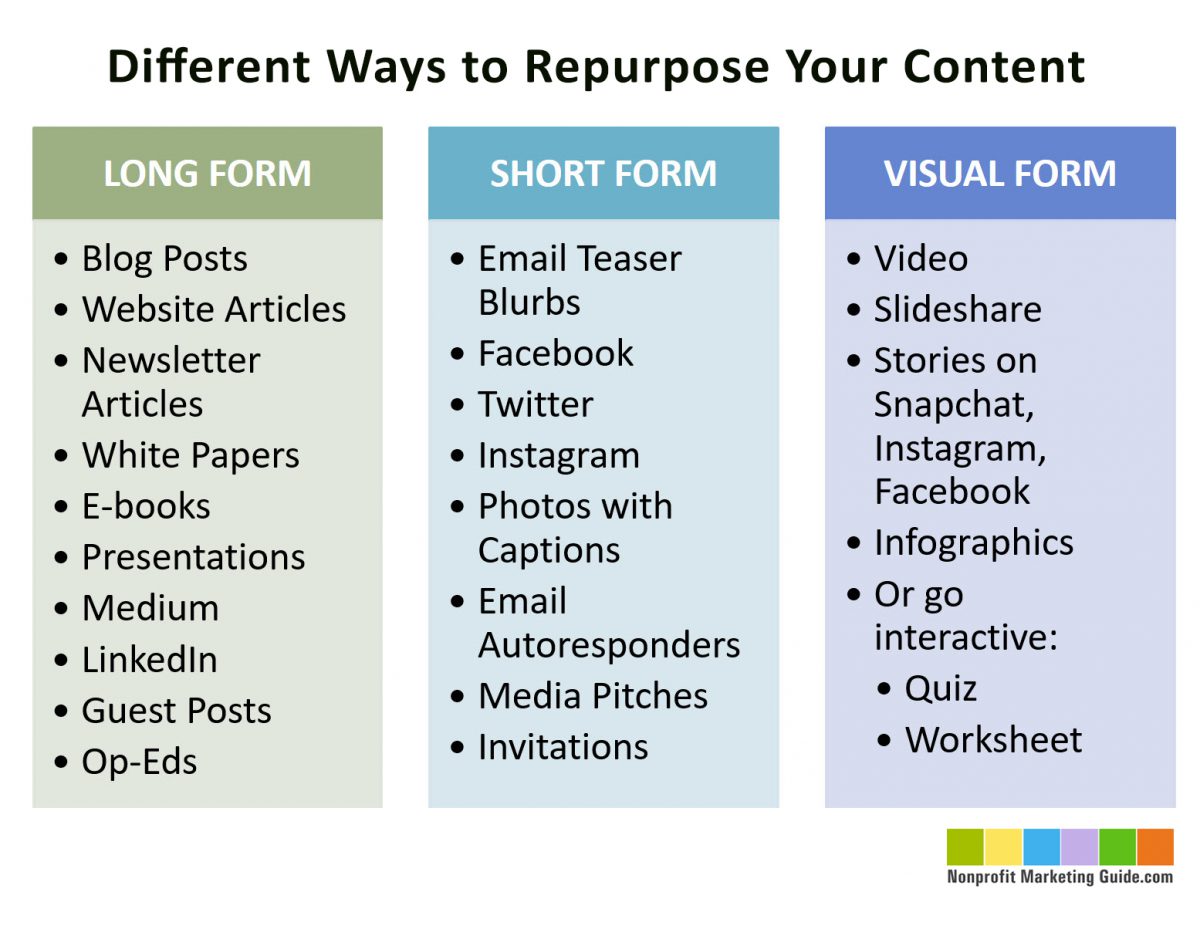
While this post is meant to give your small business advice for Facebook, since you are creating content for Facebook, why not utilize that same content to help you throughout social media?
If you’ve taken the time to create a great post, don’t just publish it once and move on. Repurposing allows you to squeeze more value out of your content, and makes your overall marketing more efficient.
Here are some simple, high-ROI ways to repurpose your Facebook content across other platforms:
1. Cross-Post Instagram Reels to Facebook
If you’re already making short-form video for Instagram, share it directly to Facebook Reels. It’s a great way to double your visibility with zero extra effort. Just tweak the caption to match Facebook’s voice and audience.
2. Turn a Blog Post Into 3+ Facebook Posts
Let’s say you publish a blog post (like this one!). Pull out a key stat, quote, or practical tip and turn it into its own Facebook post. Add a photo or graphic, and boom: You’ve just tripled your reach with minimal work!
3. Use Facebook Live Recordings as YouTube Shorts or Email Content
Went Live recently? Download the video, trim a 30- to 60-second clip, and upload it as a YouTube Short. You can also embed the replay in an email or use clips on Instagram. Repurposing extends the life of your content while boosting your cross-channel consistency.
Remember, your audience isn’t everywhere at once, but your content can be!
9. Be Relatable, Not Salesy
No one wants to be sold to on social media, so don’t treat your Facebook Page like an advertising channel. One of the great things about social media is that it’s built on interpersonal relationships. In turn, the best way to sell using Facebook for small businesses is by building relationships while also telling people what you have to offer. In the process, you will find new fans and customers for your business and, hopefully, increase revenue.
Real-World Takeaway: People scroll Facebook to connect, not to be pitched. The brands that win are the ones that sound human. Share behind-the-scenes moments, founder insights, or a quick story from a real customer. The sale will come once they trust you, and that trust is built with authenticity, not a hard push.
Facebook Engagement Strategy
Facebook, and social media in general, must be a two-way street for success.
In other words, it isn’t enough to simply post something on your Facebook for a small business page and then hope for the best. Rather, it’s important to hear back from your fans and customers. This helps provide social proof that you are good at your job. Also, posts and pages that have a lot of engagement are treated more favorably in the Facebook algorithm. Let’s look at how you can maximize engagement.
10. Interact with Your Fans
First of all, interact with your fans! While you can’t return a “like,” you can respond to comments or questions. This way, your fans know that you are responsive to their questions and concerns on Facebook, and not just when they call you. In addition, soliciting engagement, such as by asking a question, boosts interaction. I call this technique writing engagement posts.
Fractional CMO Tip: Your comment section is a goldmine for relationship-building. A simple reply can turn a casual fan into a loyal customer or even into an advocate. Use every interaction as a chance to reinforce your voice and values. Bonus: the Facebook algorithm loves conversations, so engagement boosts visibility too.
11. Go Live on Facebook
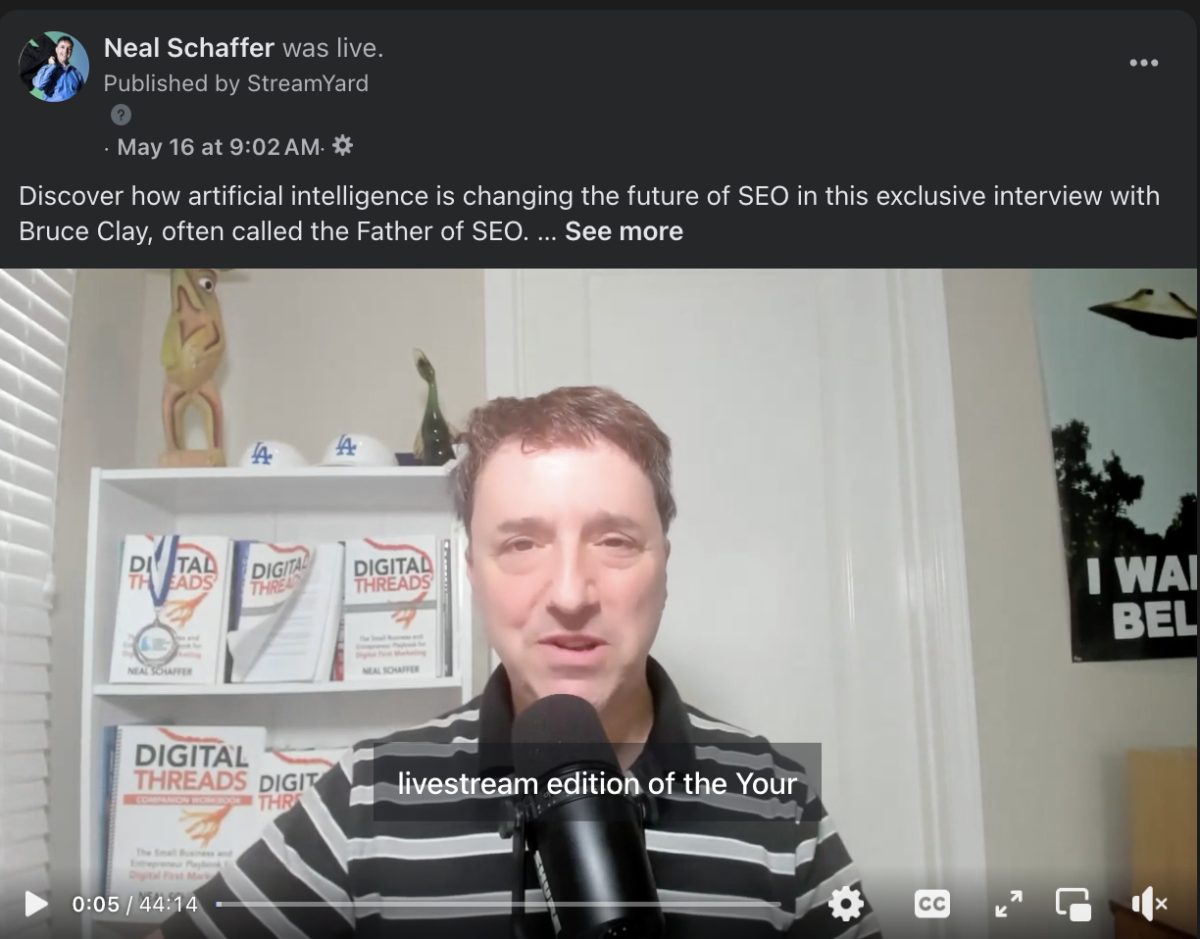
One of the most powerful yet underused tools in your Facebook marketing toolbox is Facebook Live.
Why? Because Facebook prioritizes Live video in the feed. Your followers will also often get notified when you go live, giving you an immediate visibility boost without spending a dime on ads.
Going live is a great way to show the human side of your business. Whether you’re giving a behind-the-scenes look, launching a new product, hosting a Q&A, or even streaming an event, Facebook Live allows you to connect with your audience in real-time, and in a far more authentic way than a polished video ever could.
Here’s how small businesses can use Facebook Live strategically:
- Showcase your process. If you’re a maker, coach, or service provider, take your audience behind the scenes. Show how your product is made or how you help clients.
- Host mini-events. Going live from an in-store event, workshop, or trade show makes your fans feel like they’re part of the action, even if they can’t be there.
- Offer time-sensitive updates. Going live to announce a flash sale or special offer can create urgency and boost conversions.
- Introduce new products or team members. Put a face to your brand by introducing staff or showing off a new offering.
- Teach something. Quick tutorials, demos, or “how-to” videos are highly watchable and build authority.
Pro Tips for Going Live:
- Promote your Live beforehand to build anticipation.
- Prepare talking points, but don’t read from a script. Keep it conversational.
- Respond to comments during the stream. This helps boosts engagement and builds community.
- Repurpose the recording: After your broadcast, you can save and share the video as a regular post for those who missed it.
Facebook Live provides you a chance to connect in real time, build trust, and humanize your brand. If you’re not using it yet, you’re leaving one of Facebook’s most valuable free tools on the table.
12. Consider Starting Facebook Group
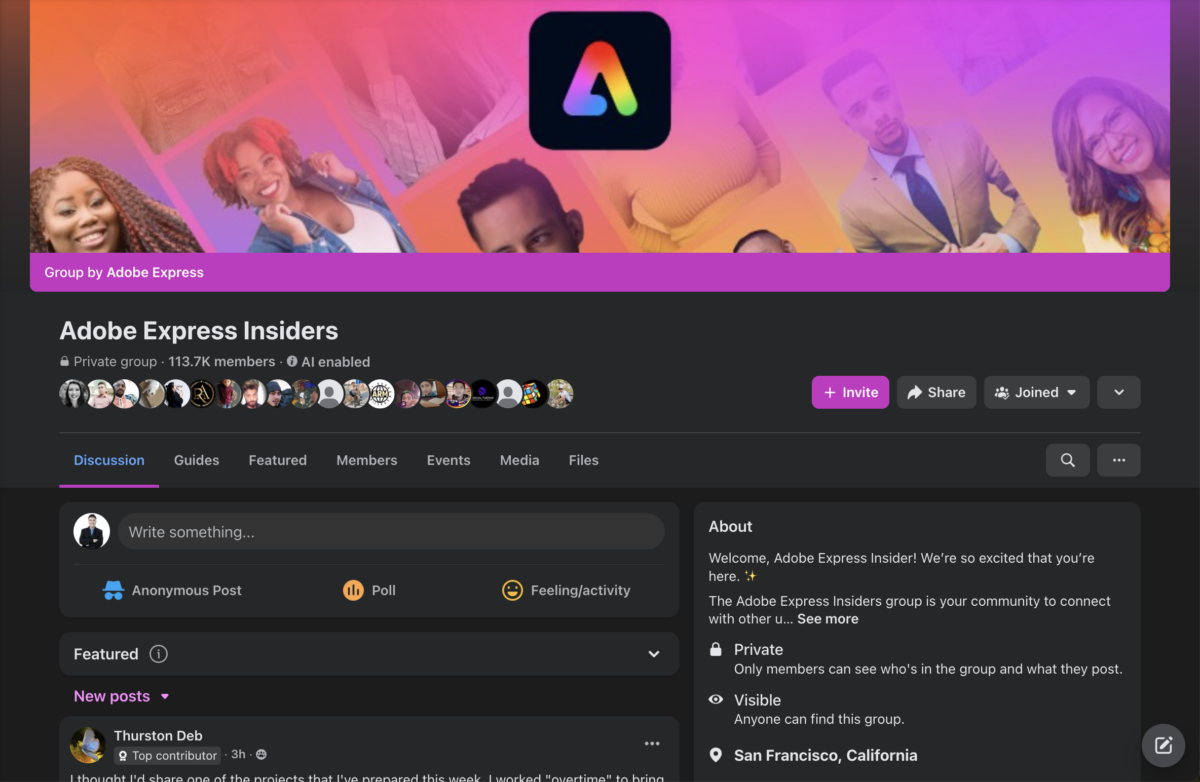
While your Facebook Page is a great place to showcase your brand, products, and content, it isn’t always the best place for building deeper community or facilitating ongoing discussion. That’s where Facebook Groups come in.
Facebook Groups offer a more interactive, member-driven experience where your followers can contribute more freely, ask questions, and connect with others who share similar interests, all centered around your business or industry niche.
Why a Group Can Be a Game-Changer for Your Business:
Unlike a Business Page, where only you control the conversation, a Facebook Group fosters peer-to-peer engagement. Members can post, share ideas, and ask for advice, turning your brand into a hub for community rather than just content.
It’s a powerful way to:
- Build loyalty and brand affinity through two-way conversations.
- Offer support, education, and value that goes beyond your product or service.
- Crowdsource ideas, feedback, and even new product concepts.
- Turn customers into ambassadors who help others in the group.
- Increase organic reach, since Group posts often get more visibility than Page content.
What Kind of Group Should You Start?
Think beyond your business name. Create a group around a shared identity, lifestyle, or challenge your target audience relates to. For example:
- A local pet store might run “DIY Dog Moms & Dads [City Name]”
- A personal trainer might start “Busy Professionals Getting Fit (with [Your Brand])”
- A digital marketing consultant (like me!) could create a group for small business owners looking to master social media without hiring an agency
This approach helps attract members who are interested in your space, even if they haven’t bought from you yet.
Pro Tip: Keep Engagement High
Starting the group is just the beginning. To keep members active and engaged:
- Welcome new members each week.
- Start regular discussion threads.
- Share behind-the-scenes content or exclusive group-only perks.
- Encourage user-generated content.
- Go live inside the group for a more intimate, VIP-style experience.
If you’re looking to build a community, not just an audience, around your brand, a Facebook Group is one of the most effective (and free) ways to do it. Start small, stay consistent, and let your community grow naturally with the right intent behind it.
Further Reading: 5 Ways To Use Facebook Groups For Business Marketing
Facebook Ads Strategy
Facebook has become increasingly “pay-to-play,” and while organic tactics still have the potential to be powerful, paid advertising is a vital if not mandatory piece of your Facebook marketing puzzle.
This is especially true if you want to reach new audiences or retarget past visitors. But jumping into Facebook Ads without a clear strategy can burn your budget fast. These next three tips will help you approach Facebook advertising more intentionally.
13. Consider Investing in Facebook Ads
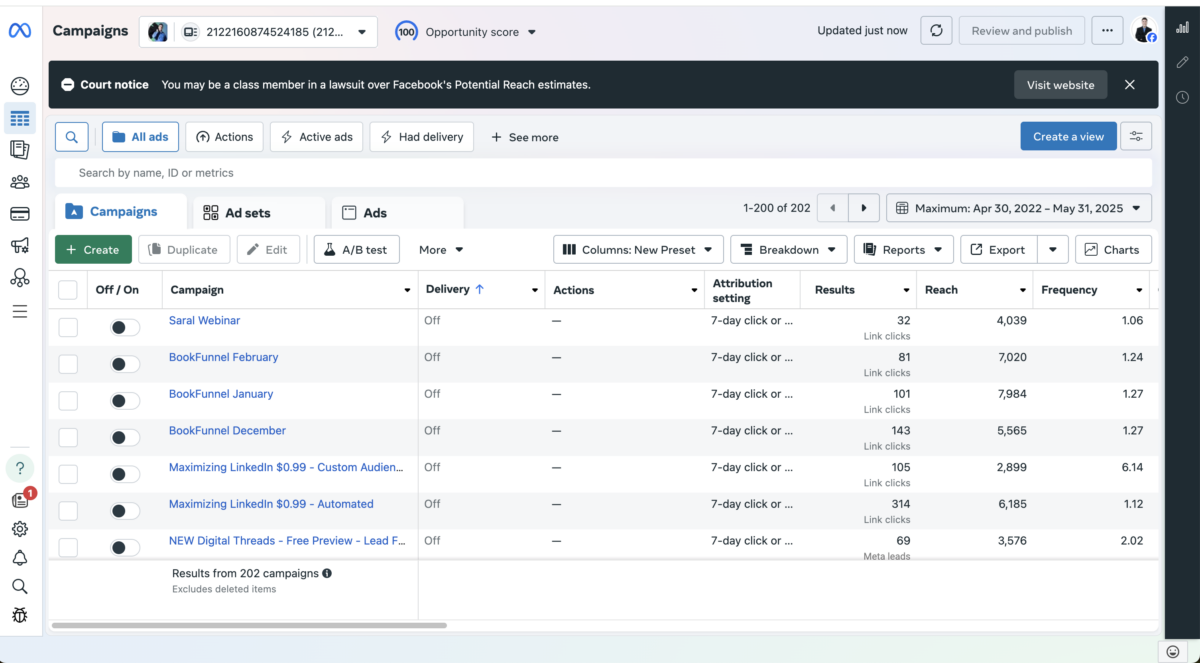
Let’s be honest: organic reach on Facebook isn’t what it used to be. If you’re looking to scale your visibility, drive consistent traffic, or promote specific offers, Facebook Ads are one of the most cost-effective ways to do it when done right.
With Facebook (and Meta) Ads, you’re not just boosting posts and hoping for the best. You get access to advanced audience targeting across Facebook, Instagram, Messenger, and even WhatsApp. This means you can:
- Zero in on people by demographics, location, interests, and behaviors.
- Reach your existing audience again through retargeting.
- Test multiple messages and creative styles with minimal spend.
The key is to start small and experiment. Don’t blow your whole budget on one ad. Instead, test different formats, such as image ads, video, carousel as well as different messages to see what resonates most with your audience. Then, double down on what works.
Pro Tip: If you’re unsure where to start, run an ad to your most engaged audience first. These are people who’ve interacted with your Page or visited your website recently. These warm audiences are more likely to convert, giving you better ROI.
Further Reading: 8 Best Facebook Ad Mockup Generators to Enhance Your Campaigns
14. Structure Your Pixel Strategically
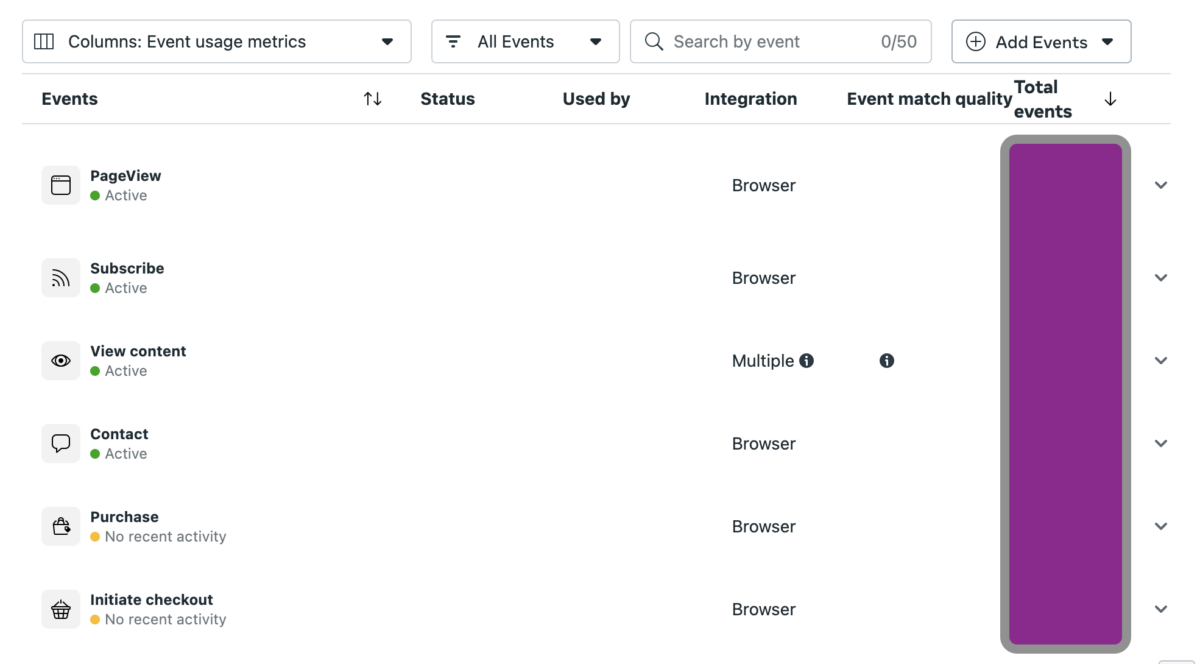
If you’re running any Facebook Ads to your website, the Meta (formerly Facebook) Pixel is your secret weapon. Without it, you’re flying blind.
Installing the Pixel on your website allows you to:
- Track conversions from Facebook Ads (like purchases or email sign-ups).
- Retarget visitors who didn’t convert the first time.
- Build lookalike audiences based on site behavior.
- Optimize ads for specific actions, not just clicks.
But installing the Pixel is only the first step. The real power comes from defining Standard Events. These are things like “Add to Cart,” “Initiate Checkout,” or “Complete Purchase.” These events help you track intent and behavior, and allow Facebook’s algorithm to optimize delivery to users most likely to take those actions.
Fractional CMO Insight: Even if you’re not running ads yet, install the Pixel now. It starts collecting data immediately, giving you a head start when you’re ready to launch your first campaign.
15. Create Custom Audiences
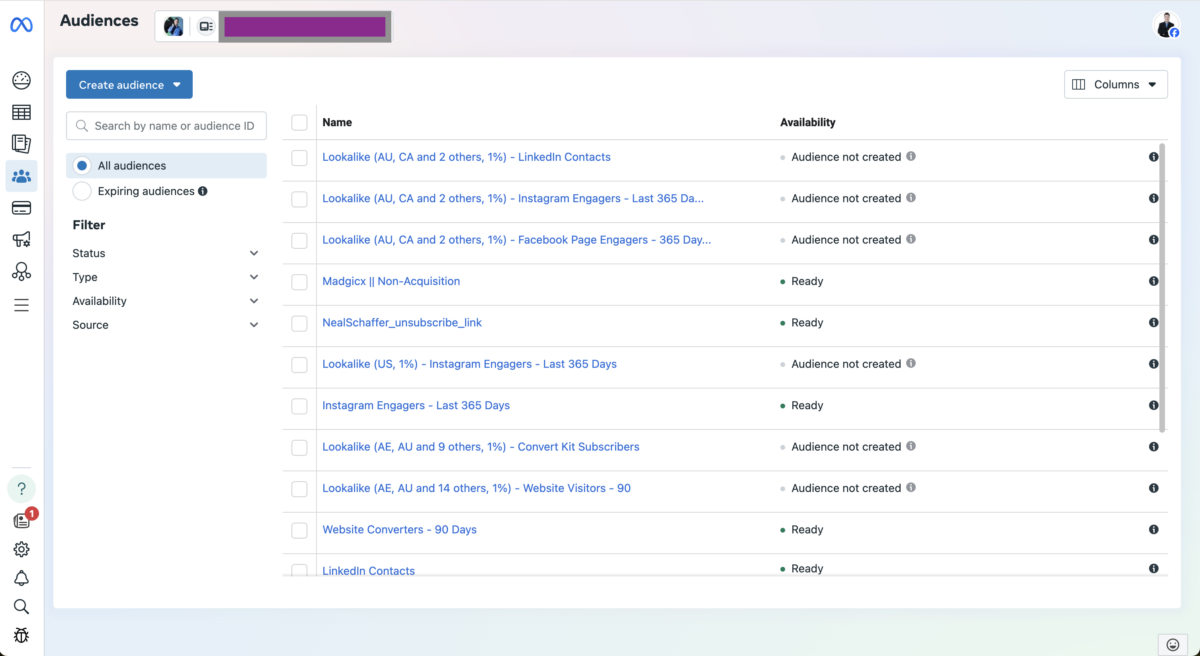
Not all potential customers are created equal, so not all Facebook ads should target cold audiences. That’s where Custom Audiences come in.
With Custom Audiences, you can target:
- People who have visited your website or specific product pages.
- Users who have engaged with your Facebook or Instagram content.
- Your email subscribers or past customers (upload your list).
- People who watched a certain percentage of your videos.
This allows you to create personalized, high-converting campaigns that speak to where someone is in your customer journey.
For example:
- Show a discount offer ad to someone who abandoned their cart last week.
- Invite past customers to check out a new product line.
- Share a testimonial video with email subscribers who haven’t bought yet.
Once you’ve built a few Custom Audiences, take it one step further by creating Lookalike Audiences. These are new users who “look like” your best customers, allowing you to expand reach without guessing who to target.
Pro Tip: Make your Custom Audiences as specific as possible. The more tailored your message, the better your results and the lower your cost per click.
Optimize for Best Results
Social media marketing requires you to always look at your analytics and find insight on how to grow.
You never know when your analytics tools will show you some missed opportunities or areas where you’re no longer relevant. Then, you can avoid spending too much money on prospects or audiences that are unlikely to become customers.
16. Facebook Marketing Mistakes to Avoid
No one starts off as a Facebook marketing expert, and that’s okay. But there are a few common mistakes that can quietly undermine your results if you’re not paying attention. Here are some of the big ones to avoid:
1. Overposting Promotions
If every post is a sales pitch, your followers will tune out, or worse, unfollow. Think of Facebook as a relationship-building platform first. Use the 80/20 rule: 80% value-driven, engaging content and only 20% promotional.
2. Ignoring Comments or Messages
Engagement is a two-way street. When someone comments on a post or sends a message, treat it like someone walking into your store. Ignoring comments (or taking too long to respond) sends the message that you’re not listening.
3. Not Testing Your Ads
Launching one ad and hoping it works is like flipping a coin. Instead, test different images, headlines, or audiences with a small budget. Then double down on what’s working. Data beats guesswork every time.
4. Skipping the Pixel
If you’re running ads without the Meta Pixel installed on your website, you’re missing out on one of Facebook’s most powerful targeting and optimization tools. It’s like trying to fly without radar.
5. Posting Without a Strategy
Random posting once in a while isn’t a strategy. It’s a hobby. Even if it’s just one post a week, having a consistent message, cadence, and goal behind your content makes a huge difference.
Real-World Takeaway: You don’t need to be perfect. You just need to be intentional. Avoid these common traps, and you’ll already be ahead of most small businesses on Facebook.
17. Review Analytics
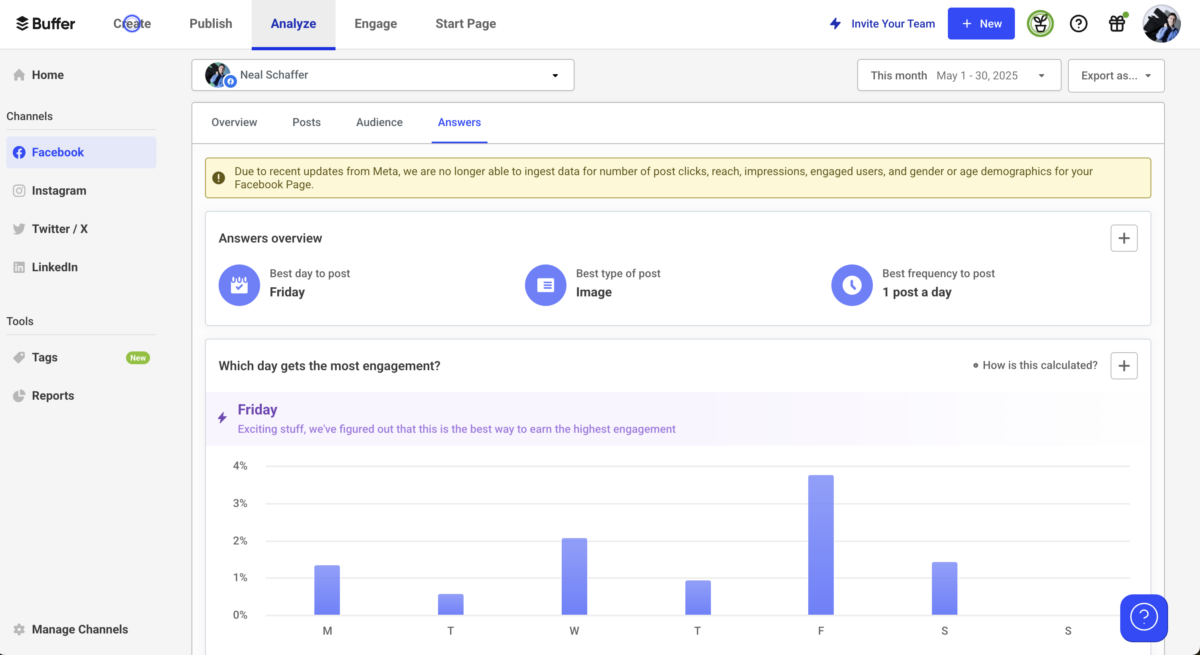
Once you’re actively posting and possibly running ads, the most important thing you can do is this: don’t guess, measure!
Facebook gives you a wealth of analytics through Meta Business Suite and the Insights tab on your Page. These tools show you exactly how your content is performing, who’s engaging with it, and what’s driving real business results, not just vanity metrics like likes and impressions.
Here’s what to keep an eye on:
- Engagement Rate: Are people liking, commenting, clicking, or sharing? This tells you what kind of content is actually resonating.
- Reach and Impressions: How many people are seeing your posts, and how often?
- Video Views: For video content, especially Lives or Reels, this is your key to understanding watch behavior.
- Click-through Rate (CTR): If you’re linking to your site, how many are clicking? Low CTR could mean your post copy or creative needs adjusting.
- Conversions (with Pixel): If you’re running ads, track sales, leads, or other conversion events. These are your true performance indicators.
Fractional CMO Insight: Use your analytics not just to evaluate the past, but to guide the future. Double down on your top-performing content types, posting times, and ad creatives. Pause or refine what’s underperforming.
Remember, social media success isn’t just about what you post but how you adapt based on what the data tells you. If you’re not reviewing your performance, you’re just broadcasting. But if you’re measuring and refining, you’re marketing strategically.
Further Reading: 13 Best Facebook Analytics Tools to Track Your Social Media Performance
Conclusion
As you can see, there are a lot of things to take into consideration when marketing your small business on Facebook.
But with the right tools and tips in hand, it’s definitely doable. Even though it’s become highly pay-to-play, Facebook for small businesses remains useful even by leveraging free tools. If you want more detailed instructions on how to execute any of the tactics we mentioned today, be sure to check out our other blog posts on Facebook marketing. In the meantime, start putting these 15 tips into action and see how your small business thrives on one of the world’s most popular social media platforms!


